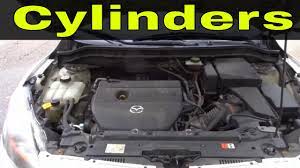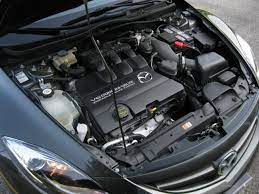How to Determine if Your Car is a 4-Cylinder or 6-Cylinder Engine
When it comes to understanding the technical aspects of your vehicle, identifying the number of cylinders in your car's engine is crucial. The engine's cylinder count directly impacts its performance, fuel efficiency, and overall power. Many car owners, especially those new to automotive knowledge, might struggle to differentiate between a 4-cylinder and a 6-cylinder engine. In this comprehensive guide, we will explain the key differences between these two engine types and provide you with step-by-step methods to determine whether your car has a 4-cylinder or a 6-cylinder engine.

Cylinder Engine
I. Understanding the Basics
Before we delve into the methods of identification, let's first understand the fundamental differences between 4-cylinder and 6-cylinder engines.
A. 4-Cylinder Engines
A 4-cylinder engine is a type of internal combustion engine with four cylinders arranged in a straight line or in a V-shape configuration. These engines are known for their efficiency and relatively lower power output compared to 6-cylinder engines. They are commonly found in compact cars, sedans, and small SUVs.
B. 6-Cylinder Engines
On the other hand, a 6-cylinder engine is an internal combustion engine with six cylinders arranged in a straight line or in a V-shape configuration. These engines offer higher power and smoother performance but may sacrifice some fuel efficiency when compared to 4-cylinder engines. They are often found in larger vehicles, including mid-size sedans, SUVs, and trucks.
II. Identifying Your Car's Engine Type
Method 1: Check the Vehicle's Manual
The owner's manual is an excellent resource for understanding your car's specifications. Look for the section that details the engine specifications, which should clearly indicate the number of cylinders.
Method 2: Check the Vehicle Identification Number (VIN)
The VIN is a unique code assigned to each vehicle and contains valuable information about the car's features, including the engine type. The eighth digit of the VIN represents the engine code, which can be cross-referenced to determine the cylinder count.
Method 3: Count the Spark Plugs
Locate the spark plugs on your car's engine. A 4-cylinder engine will have four spark plugs, while a 6-cylinder engine will have six. Count the number of spark plugs to identify your engine type.
Method 4: Examine the Emissions Sticker
Find the emissions sticker under the hood, typically on the hood itself or near the radiator. This sticker provides information about the engine and emission standards. Look for the "Cylinders" or "Cyl" section, which will specify the number of cylinders.

Cylinder Engine
III. Comparison between 4-Cylinder and 6-Cylinder Engines
To better understand the differences between these engine types, let's compare them side by side:
| Characteristic | 4-Cylinder Engine | 6-Cylinder Engine |
|---|---|---|
| Power Output | Moderate | High |
| Fuel Efficiency | Excellent | Slightly Lower |
| Vehicle Size | Compact cars, sedans | Mid-size sedans, SUVs, trucks |
| Performance | Suitable for daily driving | Smooth and powerful performance |
| Cost | Generally lower | Often higher |
| Maintenance | Affordable | Potentially costlier |
| Availability | Widely available | Common in many models |
IV. Benefits and Drawbacks
A. Benefits of 4-Cylinder Engines
- Excellent fuel efficiency, making them budget-friendly in the long run.
- Suitable for daily commuting and city driving.
- Lower emissions and environmentally friendly.
B. Benefits of 6-Cylinder Engines
- Higher power output, ideal for towing and hauling.
- Smooth and refined performance.
- Better suited for highway driving and long trips.
​​​​​​​
C. Drawbacks of 4-Cylinder Engines
- Limited power, which may not be suitable for heavy loads or towing.
- Can feel underpowered during aggressive driving.
​​​​​​​
D. Drawbacks of 6-Cylinder Engines
- Slightly lower fuel efficiency.
- Generally higher initial cost compared to 4-cylinder engines.

Cylinder Engine
In conclusion, knowing whether your car has a 4-cylinder or 6-cylinder engine is essential for understanding its performance capabilities and making informed decisions about maintenance and upgrades. Refer to your vehicle's manual, check the VIN, count the spark plugs, or examine the emissions sticker to identify your engine type accurately. Each engine type comes with its unique advantages and drawbacks, so choose the one that best suits your driving needs and preferences. Regular maintenance and care will ensure your engine performs optimally, regardless of its cylinder count.